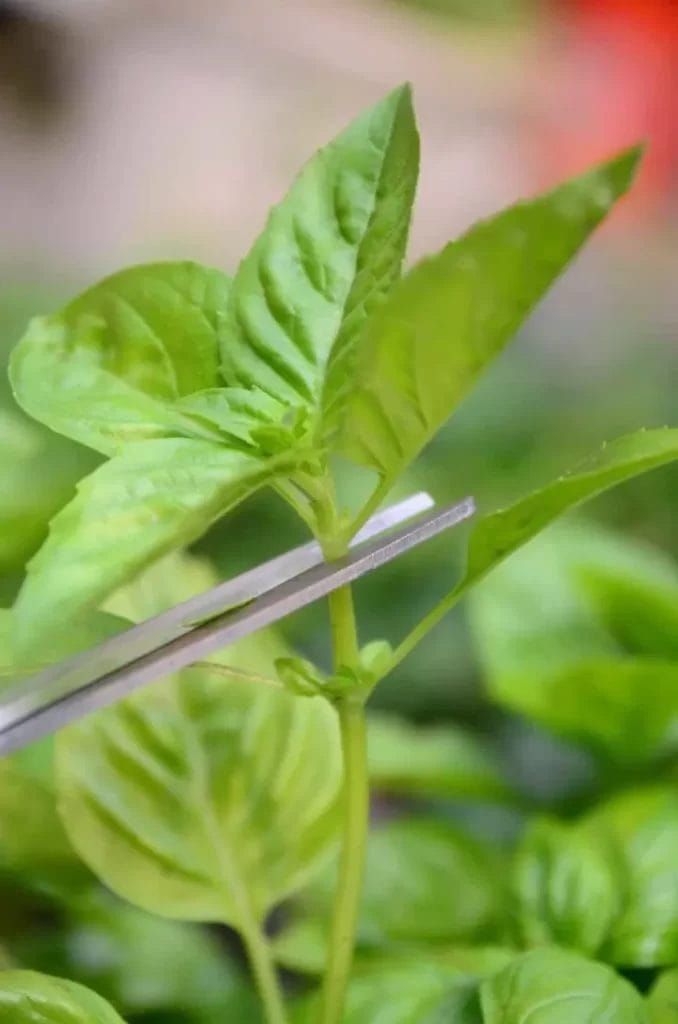How to Prune Basil for Big, Bushy Basil Plants (With Photos)
Pruning basil is a pivotal step in cultivating a robust and bushy plant, essential for both the casual gardener and the culinary enthusiast. The technique involves timely and strategic cuts that encourage the plant to branch out rather than grow tall and leggy. This practice not only enhances the aesthetic appeal of the plant but also increases its yield and extends its lifespan. As you commence on this gardening endeavor, you might wonder about the best number of leaves to leave intact, the ideal season for pruning, and how these techniques differ with various basil varieties. Let’s dissect these nuances to transform your simple basil plant into a flourishing bush.
Understanding Basil Pruning Basics
To guarantee a thriving basil plant, it is essential to grasp the fundamentals of proper pruning techniques. Initiating the process when the plant stands about six inches tall, pruning encourages a bushier growth by prompting the plant to develop lateral branches.
Identify the nodes on the plant—points where leaves meet the stem. Cutting directly above these nodes stimulates the emergence of new branches, enhancing the plant’s fullness and volume. Avoid pruning more than one-third of the plant at any one session to prevent stress.
Regular pruning not only increases leaf production but also delays flowering, thereby extending the harvesting period and ensuring the leaves retain their robust flavor.
Essential Tools for Pruning Basil
Selecting the right tools is essential for effective basil pruning. Mastery in basil care begins with the utilization of proper instruments that guarantee precise and healthy cuts, fostering a robust plant. The following tools are fundamental:
- Sharp Pruning Shears: For clean and close cuts without damaging the delicate stems.
- Fine Scissors: Ideal for thinning out smaller, harder-to-reach areas of the plant.
- Gloves: To protect your hands from potential irritants and maintain a firm grip during the pruning process.
Choosing high-quality tools not only simplifies the task but also contributes to the plant’s overall health, promoting vigorous growth and abundant basil yields. Equip yourself wisely to master the art of basil cultivation.
Step-by-Step Basil Pruning Guide
Having equipped ourselves with the appropriate tools, let us now explore the detailed process of pruning basil effectively. Begin by identifying branches with tiny new leaves at their nodes. This is your cue to make a precise cut.
| Step | Action |
|---|---|
| 1 | Locate new growth nodes |
| 2 | Position shears 1/4 inch above the node |
| 3 | Make a clean, angled cut |
| 4 | Remove any old or damaged leaves |



This method guarantees you encourage lateral growth, leading to a fuller basil plant. By consistently applying these steps, you maintain not only the health but also the productivity of your basil, ensuring a continuous supply of fresh leaves for your culinary needs.
Tips for Healthy Basil Growth
For ideal basil growth, make sure that each seedling is planted in a spacious pot with rich compost to promote healthy competition and development. Achieving mastery in basil cultivation requires attention to several key factors that guarantee vigorous plants and peak yields.
- Consistent Watering: Establish a regular watering schedule to keep the soil moist but not waterlogged, as basil thrives in well-drained conditions.
- Adequate Sunlight: Position your basil in a spot that receives at least six hours of sunlight daily to enhance flavor and growth.
- Nutrient Management: Apply a balanced, organic fertilizer every four to six weeks to support the nutritional needs of your growing basil plants.
Creative Uses for Basil Leaves
Why not explore the versatility of basil leaves by incorporating them into a variety of creative culinary applications?
Beyond the classic pesto, basil can enhance a myriad of dishes. Try infusing your oils with basil leaves for a fragrant touch to dressings and marinades.
For a rejuvenating twist, add finely chopped leaves to homemade lemonades or cocktails. Consider crafting a basil syrup for desserts or coffees, embracing the herb’s sweet and savory profile.
Elevate your pizzas and pastas by sprinkling fresh basil atop just before serving. Moreover, experiment with basil in different cultural cuisines, such as incorporating it into Thai dishes or blending it into Indian green chutneys.
Discover the full potential of basil in your culinary ventures.
Conclusion
To sum up, mastering the art of basil pruning is not just about enhancing the plant’s aesthetic appeal but also about maximizing its culinary potential. By following the guidelines on timely pruning, using the right tools, and maintaining ideal growing conditions, one guarantees a lush, productive basil plant.
Who wouldn’t enjoy the sight of a flourishing basil plant in their garden, especially when it promises an aromatic addition to a myriad of dishes?






